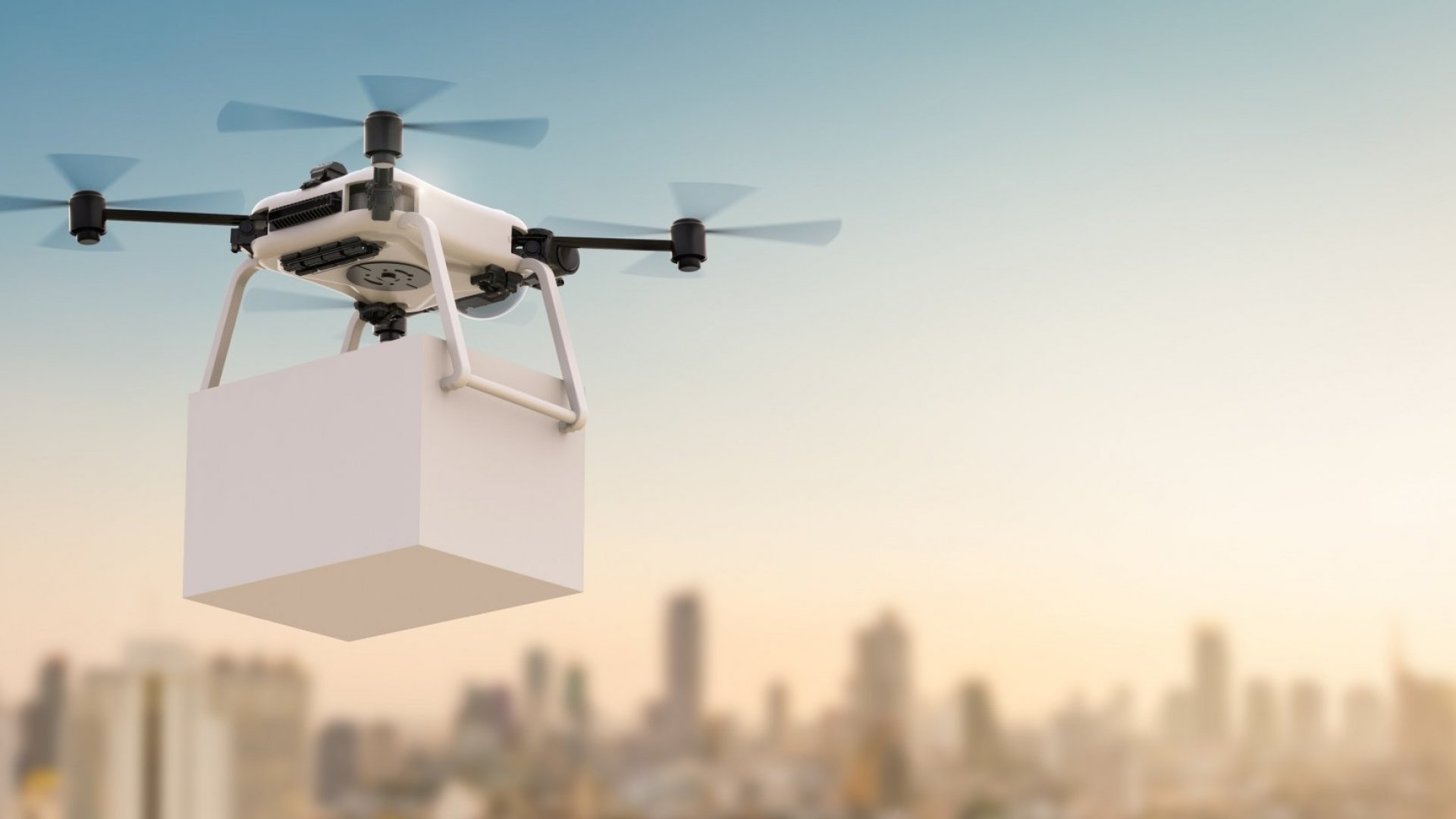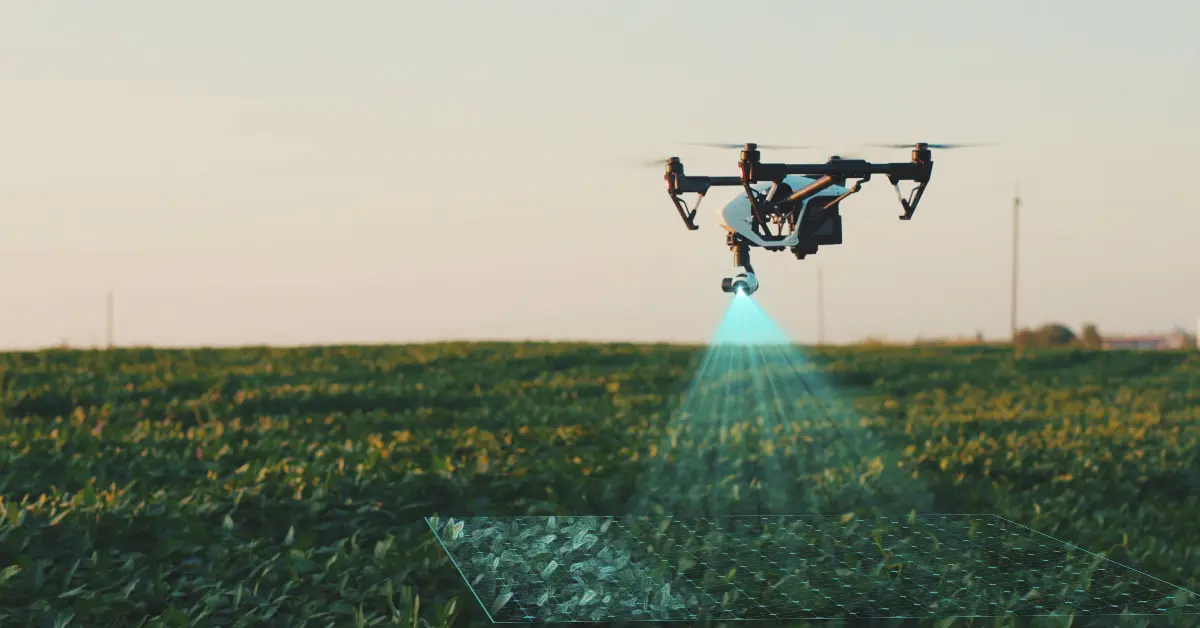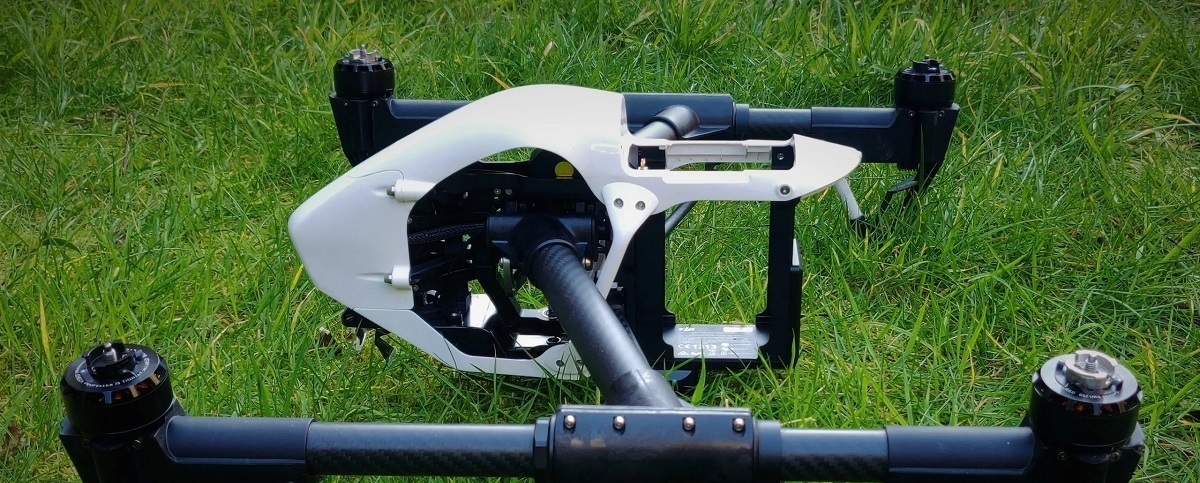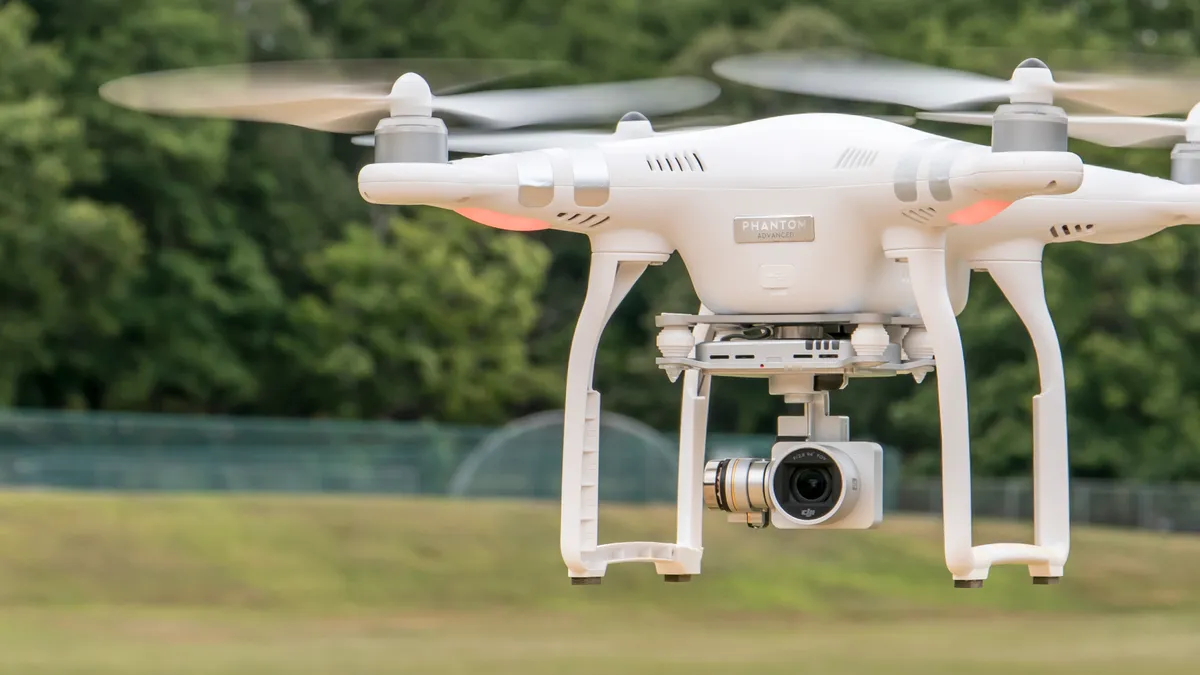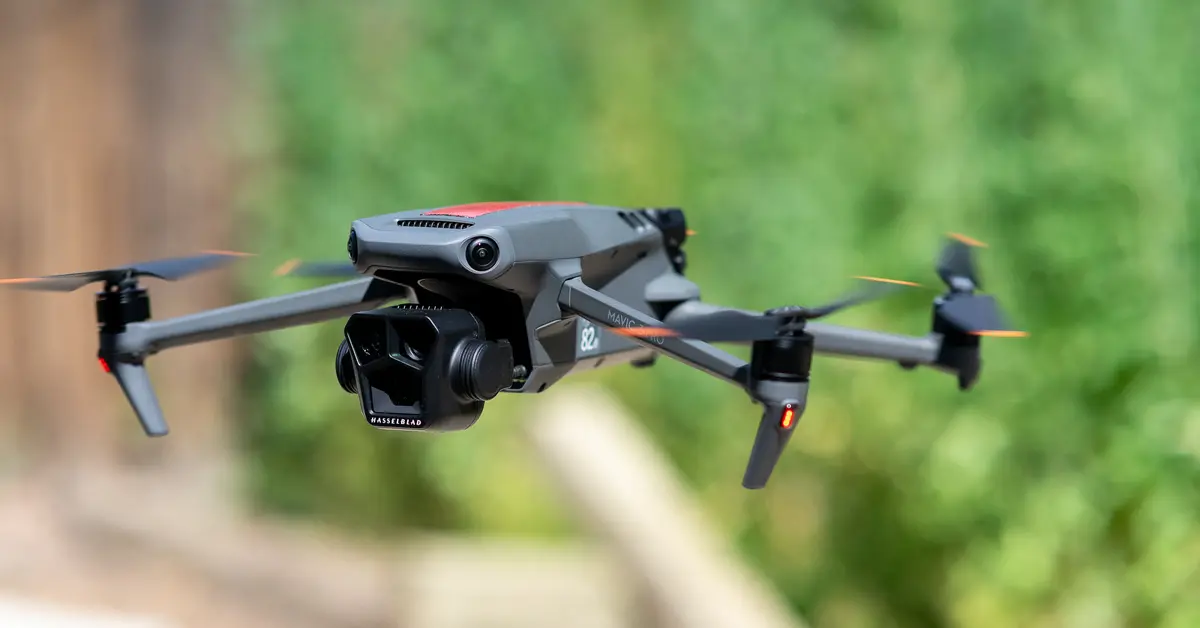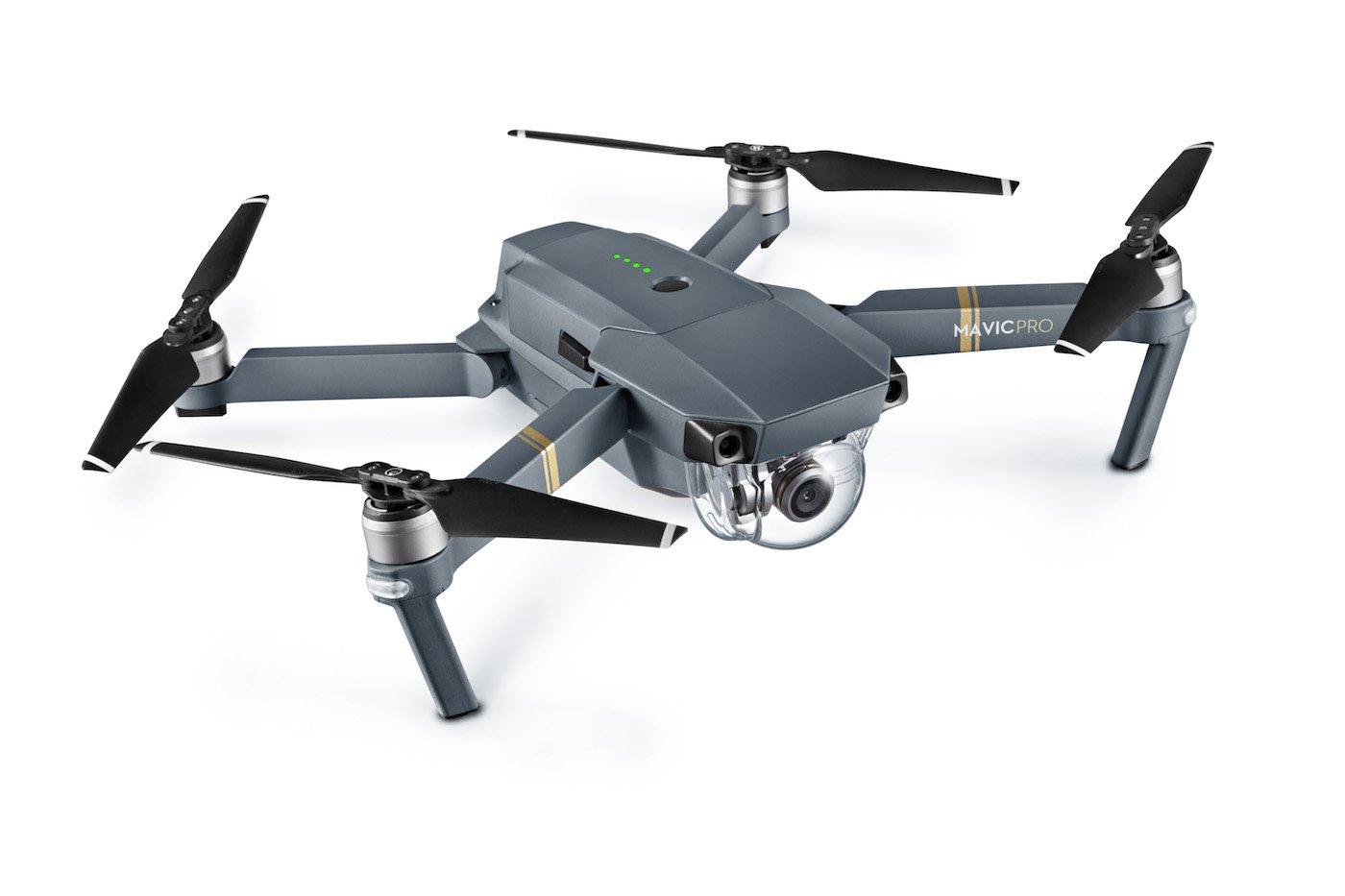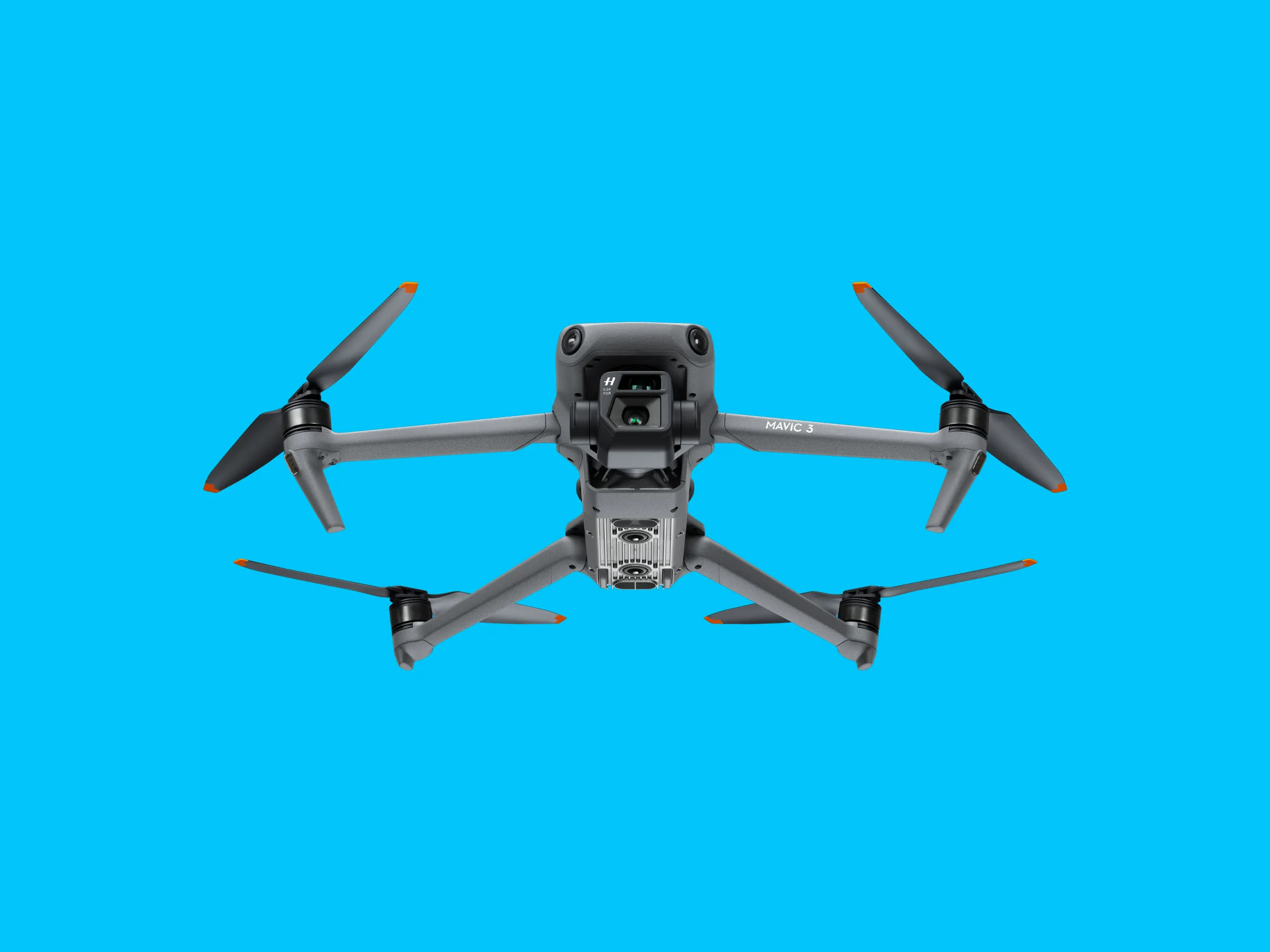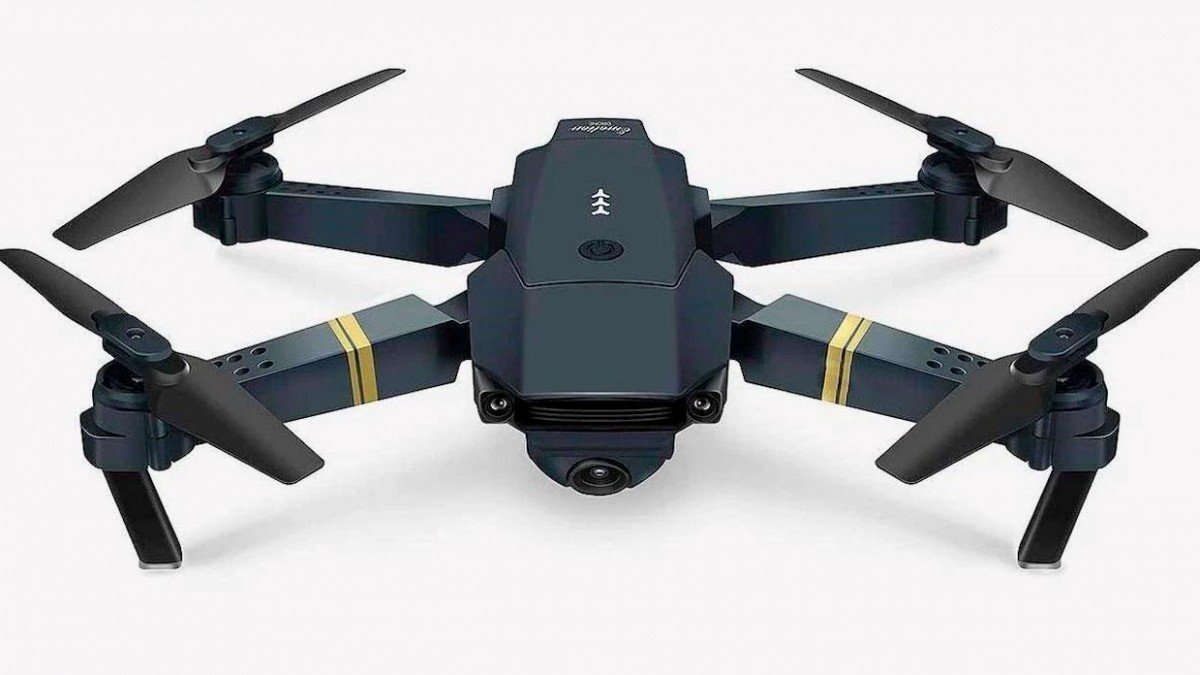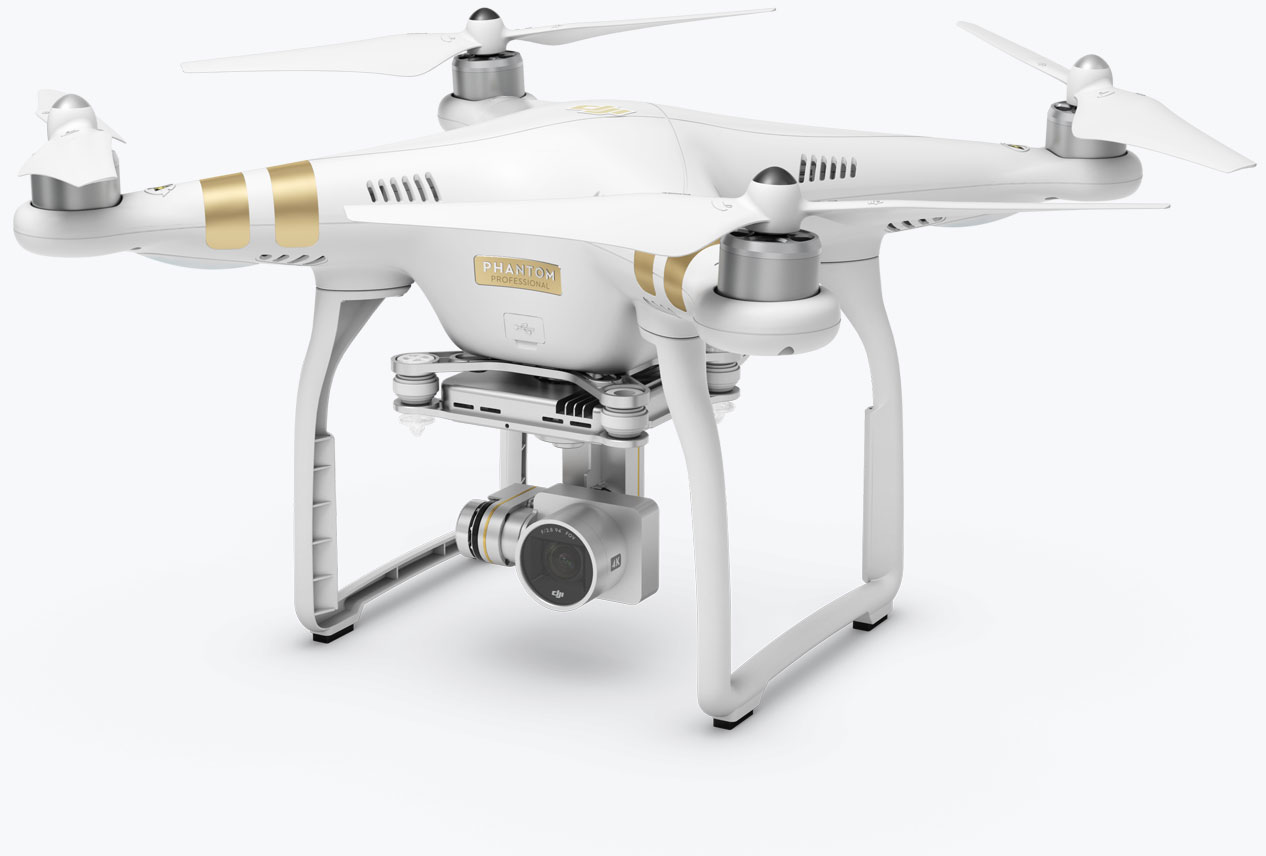Introduction
The rise of drone technology has revolutionized the field of photography, allowing for breathtaking aerial views and unique perspectives that were once unimaginable. Drones have quickly become popular among photography enthusiasts, professionals, and hobbyists alike, opening up new opportunities for those looking to monetize their passion for capturing stunning images.
If you’re an aspiring drone photographer with an eye for composition and a love for adventure, you may be wondering how to sell your drone photos and turn your hobby into a profitable venture. In this article, we will guide you through the essential steps to help you navigate the market and successfully generate income through your aerial photography skills.
Before diving into the practical steps, it’s important to emphasize the significance of both technical proficiency and artistic vision. While owning a drone and taking captivating photos is crucial, it’s equally essential to understand that the competition is intense. Therefore, honing your skills, staying updated with the latest techniques, and continually improving your craft are all essential to stand out in the crowded marketplace.
In the following sections, we will discuss various strategies that will set you on the path to selling your drone photos. From researching the market and investing in the right equipment to refining your photography skills and identifying potential buyers, we will cover everything you need to know to attract clients and maximize your earning potential.
So, if you’re ready to take your drone photography to the next level and turn your passion into a source of income, let’s dive into the first step: researching the market.
Step 1: Research the market
Before embarking on your journey to sell drone photos, it’s crucial to thoroughly research the market and understand the demand for aerial photography. This step will help you identify potential niches, target audiences, and popular trends, ensuring that your efforts are directed towards the most profitable avenues.
Start by exploring online platforms, stock photography websites, and social media platforms to get a sense of the types of drone photos that are in high demand. Look for recurring themes, popular subjects, and emerging trends in the industry. This research will not only inspire your own creative ideas but also provide valuable insights into what potential buyers are looking for.
In addition to online research, make sure to attend photography exhibitions, drone exhibitions, and industry conferences. These events are excellent opportunities to network with professionals, learn about new technologies, and gain a deeper understanding of the current market landscape.
Another crucial aspect of market research is analyzing the competition. Identify other drone photographers in your area and examine their portfolios, pricing strategies, and marketing tactics. Take note of what sets them apart and how you can differentiate your own work to stand out in the crowd.
Furthermore, consider reaching out to potential clients or industry experts for their insights. Collecting feedback from professionals who regularly purchase drone photos can provide valuable guidance on what qualities and subjects they are most interested in.
Ultimately, the aim of this research is to identify gaps in the market where you can offer a unique perspective or cater to unmet needs. By understanding the demand, you can align your photography style and subject choices to attract the attention of potential buyers.
Once your market research is complete, you’ll have a solid foundation to move forward with confidence. Armed with this knowledge, you can now proceed to the next step: investing in the right equipment.
Step 2: Invest in the right equipment
Investing in the right equipment is crucial for capturing high-quality drone photos that will attract buyers. While there are various drone models available in the market, choosing the one that suits your photography needs is key to producing professional-grade images.
When selecting a drone, consider factors such as camera quality, flight stability, battery life, and maneuverability. Higher resolution cameras with image stabilization capabilities will allow you to capture sharp and clear photos, while a drone with a longer battery life will enable you to extend your flight duration and take more shots.
Additionally, think about the specific features and functionalities that will enhance your photography experience. Look for drones with obstacle avoidance systems, intelligent flight modes, and the ability to shoot in RAW format. These features will provide greater control and flexibility, enabling you to capture stunning images from different angles and perspectives.
Alongside the drone itself, invest in a reliable gimbal and camera filters. A gimbal is essential for stabilizing the camera and reducing unwanted vibrations or movements during flight. Camera filters, such as polarizers or ND filters, can help adjust exposure, reduce glare, and enhance the colors in your photos.
Furthermore, it’s important to have additional accessories like spare batteries, memory cards with ample storage capacity, and a quality carrying case to protect your equipment during transportation.
Keep in mind that technology is constantly evolving, so staying updated with the latest equipment and software is crucial for maintaining a competitive edge. Follow industry blogs, reviews, and forums to stay informed about new drone releases and advancements in aerial photography technology.
Remember, the quality of your equipment will directly impact the quality of your drone photos. By investing in the right equipment and regularly upgrading it as needed, you’ll be well-equipped to capture breathtaking shots that will attract potential buyers.
Once you have all the necessary equipment, it’s time to move on to the next step: learning and improving your photography skills.
Step 3: Learn and improve your photography skills
To successfully sell your drone photos, it’s crucial to continuously learn and improve your photography skills. While owning a high-quality drone is essential, it’s your creativity and technical expertise that will set you apart from the competition.
Start by familiarizing yourself with the basic principles of photography such as composition, lighting, and exposure. Understand how different settings on your camera or drone can affect the outcome of your photos. Experiment with various compositions and angles to create captivating images.
Additionally, study the work of renowned photographers, both traditional and drone-based. Analyze their composition techniques, use of lighting, and unique perspectives. Seek inspiration from their work and incorporate those elements into your own photography style.
Invest time in practicing and honing your skills. Take your drone out regularly and explore different locations to capture a wide range of subjects and landscapes. Experiment with different camera settings and flight maneuvers to understand how they impact the final result.
Learning about post-processing is just as important as capturing the perfect shot. Familiarize yourself with photo editing software such as Adobe Photoshop or Lightroom to refine and enhance your images. Experiment with adjustments like contrast, saturation, and sharpening to bring out the best in your drone photos.
Moreover, joining photography communities or taking part in workshops and online courses can provide valuable insights and feedback from experienced photographers. Engaging with like-minded individuals allows you to learn from their experiences, exchange ideas, and receive constructive criticism to further improve your skills.
Lastly, don’t forget to stay updated with the latest trends and techniques in drone photography. Follow online publications, blogs, and social media accounts dedicated to aerial photography to keep up with new ideas, styles, and emerging concepts.
By committing time and effort to continuously improve your photography skills, you’ll be able to produce stunning drone photos that appeal to potential buyers. With your skills honed, it’s time to move on to the next step: taking stunning photos from unique perspectives.
Step 4: Take stunning photos from unique perspectives
One of the key factors that will make your drone photos stand out is capturing unique and awe-inspiring perspectives. Drones have the ability to go where traditional cameras cannot, allowing for breathtaking aerial views that create a sense of wonder and fascination.
When capturing photos from your drone, think outside the box and explore different angles, heights, and compositions. Experiment with top-down shots, low-angle perspectives, and close-up details. By taking unconventional approaches, you can create visually striking images that captivate viewers.
Consider the rule of thirds and leading lines to compose your shots. Incorporate elements in the foreground, middle ground, and background to add depth and interest to your photos. Capture the natural beauty of landscapes, architectural marvels, or human activities from a bird’s-eye view, providing a fresh and unique perspective.
Timing is also crucial. Take advantage of the golden hour – the period shortly after sunrise or before sunset – when the light is warm and soft, creating stunning colors and long shadows. The varying light conditions throughout the day can dramatically impact the mood and tone of your photos, so be conscious of how the light interacts with your subjects.
Another technique to consider is long-exposure photography. By utilizing slower shutter speeds, you can capture mesmerizing shots of moving subjects such as flowing water or moving vehicles, creating a sense of motion and fluidity in your photos.
Furthermore, strive to capture emotions and tell a story through your drone photos. Look for moments of human interaction, distinctive events, or dramatic landscapes that evoke a sense of wonder or demonstrate the human experience. These photos with a narrative element have a higher chance of resonating with potential buyers.
Remember, taking stunning photos from unique perspectives requires patience, creativity, and a willingness to experiment. Don’t be afraid to take risks and venture beyond the ordinary. Continually challenge yourself to push the boundaries of your photography by seeking out new locations and subjects to capture from the air.
Once you have a collection of stunning and unique drone photos, it’s time to move on to the next step: editing and enhancing your drone photos to truly make them shine.
Step 5: Edit and enhance your drone photos
Editing and enhancing your drone photos is a crucial step in the process of preparing your images for sale. Post-processing allows you to refine the colors, tones, and overall look of your photos to make them truly stand out.
Start by importing your photos into a professional editing software such as Adobe Photoshop or Lightroom. These tools provide a wide range of options to adjust exposure, contrast, saturation, and other parameters to enhance the visual appeal of your images.
Begin by adjusting the basic settings such as exposure and white balance to achieve the desired overall tone of your photo. From there, consider making localized adjustments to specific areas or subjects within the image. Use tools such as the gradient filter or adjustment brush to selectively enhance certain elements and create a balanced composition.
Experiment with color grading techniques to add a unique look and feel to your photos. Adjust the color saturation, hue, and vibrancy to bring out the best colors in your image and create a cohesive visual style. Remember to strike a balance and avoid overprocessing, as natural-looking images tend to be more appealing to potential buyers.
Don’t shy away from experimenting with creative effects to add a unique touch to your drone photos. Consider adding vignettes, adding a subtle blur effect, or applying selective blurring to draw attention to specific areas of interest within the image.
In addition to basic adjustments, consider retouching minor imperfections or distractions in your photos. Remove dust spots, sensor spots, or any other distractions that may take away from the overall impact of the image.
Once you are satisfied with the edits, save your images in a high-resolution format suitable for online viewing and printing. It’s ideal to keep a copy of the original RAW files for future use, as they provide maximum flexibility for further edits or printing at larger sizes.
Remember, the goal of editing and enhancing your drone photos is to accentuate their visual appeal while maintaining a natural and authentic look. Strive for consistency and coherence in your editing style to create a cohesive portfolio that reflects your unique aesthetic.
With your drone photos edited and enhanced, you are now ready to build a strong online presence and portfolio to showcase your work and attract potential buyers. This will be covered in the next step.
Step 6: Build a strong online presence and portfolio
Building a strong online presence and portfolio is crucial for showcasing your drone photos and attracting potential buyers. In today’s digital age, having a professional and visually appealing online presence is essential to establish credibility and reach a wider audience.
Start by creating a dedicated website or portfolio to showcase your drone photos. Your website should have a clean and organized layout, making it easy for visitors to navigate and explore your work. Include high-quality, large-sized images that highlight your best and most striking drone photographs.
Add an “About Me” section that shares your story, passion for photography, and expertise in drone photography. This personal touch can help visitors connect with you on a deeper level and build trust in your abilities as a photographer.
Consider creating separate sections or galleries on your website to showcase different genres or subjects of your drone photography. This allows potential buyers to easily find the type of images they are looking for and demonstrates your versatility as a photographer.
Don’t forget to optimize your website for search engines by incorporating relevant keywords in your content and image descriptions. This will help improve your website’s visibility in search engine results and attract organic traffic.
In addition to a website, establish a strong presence on social media platforms such as Instagram, Facebook, and Twitter. Regularly post your drone photos, engage with your followers, and use relevant hashtags to increase your visibility within the photography community.
Consider collaborating with influencers, fellow photographers, or travel bloggers who have a significant following on social media. This can help expose your work to a wider audience and attract potential buyers who are interested in your style of drone photography.
Another effective strategy is to participate in online communities and forums dedicated to photography or drone enthusiasts. Be an active member, share your insights, and contribute to discussions. This can help you connect with like-minded individuals, gain exposure, and build relationships that may lead to potential business opportunities.
Lastly, never underestimate the power of networking. Attend photography or drone industry events, participate in art exhibitions, and join photography clubs in your local area. Networking allows you to meet potential clients, collaborate with other professionals, and gain valuable insights into the industry.
By building a strong online presence and portfolio, you increase your visibility and reach, making it easier for potential buyers to discover your drone photos and consider making a purchase. In the next step, we’ll discuss how to identify potential buyers and marketplaces to sell your drone photos.
Step 7: Identify potential buyers and marketplaces
Identifying potential buyers and marketplaces is crucial for successfully selling your drone photos. Understanding who your target audience is and where they are likely to search for and purchase aerial photographs will help you tailor your marketing efforts and maximize your chances of making sales.
Start by narrowing down your target audience. Consider the industries or sectors that can benefit from drone photography, such as real estate, tourism, advertising, and environmental conservation. Each of these industries may have specific needs and preferences when it comes to aerial imagery.
Research popular stock photography websites and explore their categories to identify the marketplaces where you can sell your drone photos. These platforms often cater to a broad range of buyers looking for stunning visuals to enhance their projects or campaigns. Make sure to review their submission guidelines and requirements to ensure your photos meet their standards.
Additionally, consider approaching local businesses or organizations that may be interested in purchasing and displaying your drone photos. For instance, hotels, restaurants, and galleries often look for unique and eye-catching visuals to enhance their spaces and create an engaging atmosphere.
Networking with professionals in the industries you are targeting can also provide valuable insights into potential buyers and marketplaces. Attend industry events, join relevant online communities, and reach out to individuals or organizations who may have a need for drone photos.
Keep in mind that building relationships and establishing trust with potential buyers is crucial. Be proactive in reaching out and showcasing your work. Prepare a compelling pitch that highlights the unique qualities of your drone photos and how they can benefit the potential buyers’ projects or campaigns.
Finally, stay informed about industry trends and new market opportunities. Keep an eye on emerging industries, technological advancements, and environmental conservation efforts that may require aerial imagery. Being at the forefront of these developments can give you a competitive advantage and open up new avenues for selling your drone photos.
By identifying potential buyers and marketplaces, you can focus your marketing efforts and tailor your photography to meet their specific needs. In the next step, we’ll discuss how to set fair prices for your drone photos to ensure both you and your buyers are satisfied.
Step 8: Set fair prices for your drone photos
Determining fair prices for your drone photos is crucial to ensure you receive proper compensation for your work while attracting potential buyers. Setting prices that reflect the value and uniqueness of your aerial imagery requires consideration of various factors.
Start by assessing the quality of your drone photos and the skill and effort required to capture them. Consider the time spent planning, flying the drone, editing, and refining the images. High-quality, well-composed, and creatively captured drone photos generally command higher prices.
Research the market and determine the average prices that other photographers are charging for similar drone photos. This will give you a sense of what buyers may expect to pay and help you position your pricing strategy accordingly. Keep in mind that prices can vary based on factors such as image usage rights, exclusivity, and the reputation of the photographer.
Consider different pricing models, such as licensing your drone photos for specific usage or selling them outright. Licensing allows you to retain ownership while granting others the right to use the images for a specific purpose and duration. Selling the photos outright transfers the ownership to the buyer, who then has unlimited usage rights.
Take into account the purpose and size of the buyer’s project or campaign. A smaller business or individual may have a limited budget, while a larger company or national brand may have a higher budget for obtaining high-quality visuals.
Offer packages or bundles to provide options to your buyers. For example, you can offer tiered pricing based on image resolution, usage rights, or the number of photos purchased. This allows buyers to choose a package that aligns with their budget and needs.
It’s also important to consider exclusivity. Determine if you are willing to sell exclusive rights to your drone photos to a single buyer, or if you prefer to retain the right to sell the images to multiple buyers. Exclusive rights generally command higher prices due to the limited availability of the images.
Finally, be open to negotiation. Buyers may have specific budget constraints or unique requirements, and being flexible in your pricing approach can help you secure a sale. However, it’s important to strike a balance and not undersell your work.
By setting fair prices for your drone photos, you establish the value of your work and ensure a fair compensation for the effort and skill involved in capturing these aerial images. In the next step, we’ll discuss how to effectively negotiate and sell your drone photos to interested buyers.
Step 9: Negotiate and sell your drone photos
Once you’ve attracted potential buyers and established fair prices for your drone photos, it’s time to enter into negotiations and close the sale. Effective negotiation skills and a professional approach will help you secure deals and ensure a mutually beneficial agreement.
Start by initiating contact with interested buyers. Respond promptly to inquiries and requests for information. Demonstrate your enthusiasm and willingness to work with them to meet their specific needs.
During negotiations, emphasize the value and unique qualities of your drone photos. Highlight how your images can enhance their projects, campaigns, or publications. Provide examples of the impact your aerial imagery can have on their visual content.
Be prepared to discuss pricing options. Clearly explain the different licensing options, usage rights, and any additional services you offer, such as image retouching or customization. This gives buyers a clear understanding of what they will receive in exchange for their investment.
Listen actively to the buyer’s requirements and expectations and be open to accommodating their needs within reason. Flexibility and willingness to work collaboratively can help build rapport and foster a positive working relationship.
Clearly define the terms and conditions of the sale, including the usage rights, exclusivity, and any restrictions. Having a written agreement or contract that outlines these details protects both parties and ensures a clear understanding of the agreed-upon terms.
If the buyer raises concerns or requests changes, remain open to constructive feedback and be willing to make reasonable adjustments if it aligns with your pricing and terms. However, remember to prioritize your own value and level of effort in the negotiation process.
Once the terms have been agreed upon, provide the buyer with the agreed-upon files or delivery method. Ensure that the high-quality images are transferred securely and in the appropriate file format or resolution specified in the agreement.
During and after the sale, maintain professionalism and excellent communication with the buyer. Address any follow-up questions or concerns promptly and ensure a positive experience throughout the process. This can lead to repeat business and recommendations to others who may be interested in purchasing your drone photos.
By effectively negotiating and selling your drone photos, you establish yourself as a professional and reputable drone photographer. This step brings us to the final step: continuing to learn and evolve as a drone photographer.
Step 10: Continue learning and evolving as a drone photographer
As a drone photographer, the learning process never ends. To stay ahead of the competition and maintain relevance in the industry, it’s crucial to continue learning and evolving your skills.
Stay updated with the latest advancements in drone technology and photography techniques. Attend workshops, webinars, and industry conferences to learn from experts and gain insights into new trends and best practices.
Experiment with new shooting and editing techniques to add variety and creativity to your drone photos. Push the boundaries of your creativity to capture unique perspectives and stand out from the crowd.
Take on challenging projects to expand your portfolio and diversify your range of drone photography skills. Push yourself out of your comfort zone and explore different subjects, locations, or styles to continually grow as a photographer.
Seek feedback and constructive criticism from peers, mentors, or industry professionals. Engage in photography communities, share your work, and participate in collaborative projects. The input from others can provide valuable insights and help you identify areas for improvement.
Stay inspired by following the work of other talented photographers, both drone-based and traditional. Observe their techniques, compositions, and use of light to learn and draw inspiration from their artistic vision.
As technology continues to advance, stay abreast of any regulatory changes or new guidelines for drone usage in your region. Understanding and adhering to these regulations is vital to ensure the safe and responsible operation of your drone.
Lastly, always strive to deliver exceptional customer service. Building lasting relationships with clients involves providing exceptional quality in your work, meeting deadlines, and exceeding expectations whenever possible. Happy customers are more likely to recommend you to others and become repeat clients themselves.
By dedicating yourself to continuous learning and improvement, you’ll be able to adapt to changes in the industry, refine your technique, and produce drone photos that resonate with buyers. This ongoing commitment to growth and development will help you thrive as a drone photographer.
Conclusion
Turning your passion for drone photography into a profitable venture is an exciting journey that requires dedication, skill, and a strategic approach. By following the steps outlined in this guide, you can navigate the path to successfully sell your drone photos and establish yourself as a professional in the industry.
Researchers the market to understand the demand for aerial photography and identify potential niches and trends. Invest in high-quality equipment that allows you to capture stunning images from unique perspectives.
Continually improve your photography skills through practice, learning from others, and staying updated with the latest techniques. Enhance your drone photos through post-processing to create visually stunning images that demand attention.
Build a strong online presence and portfolio to showcase your work and attract potential buyers. Identify potential buyers and marketplaces that align with your target audience, and set fair prices based on the value and quality of your drone photos.
Effectively negotiate with potential buyers, establishing clear terms and conditions, and delivering the agreed-upon images securely. Finally, continue learning and evolving as a drone photographer to stay ahead of the competition and to offer fresh and innovative perspectives.
In a constantly evolving industry, success as a drone photographer depends on a combination of technical expertise, artistic vision, marketing skills, and the ability to adapt to new technologies. With passion, perseverance, and a commitment to continuous growth, you can turn your drone photography hobby into a fulfilling and lucrative profession.
So, take flight and embark on your journey as a successful drone photographer. The skies are yours to explore, capture, and create breathtaking images that will captivate audiences and leave a lasting impact.







